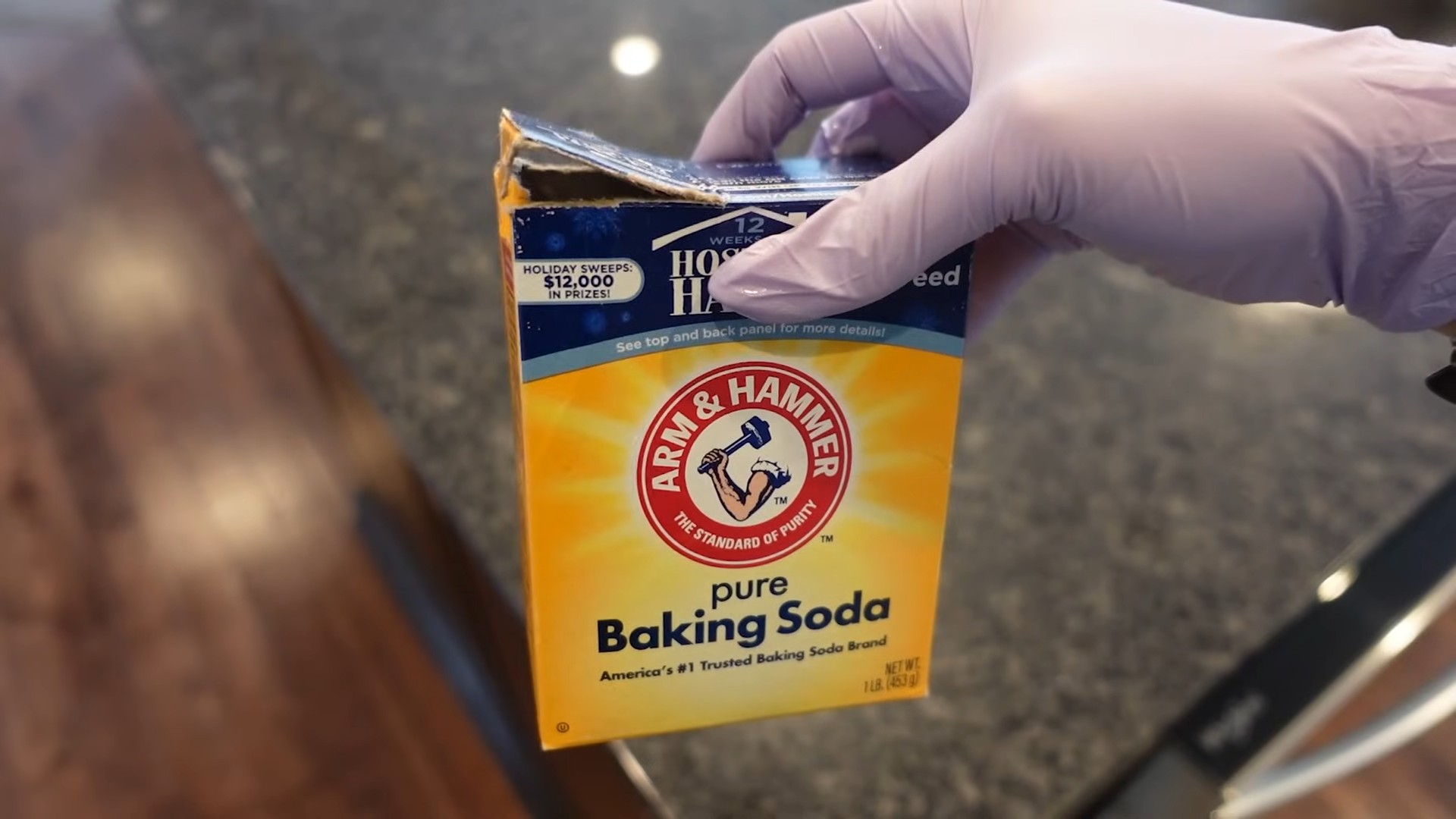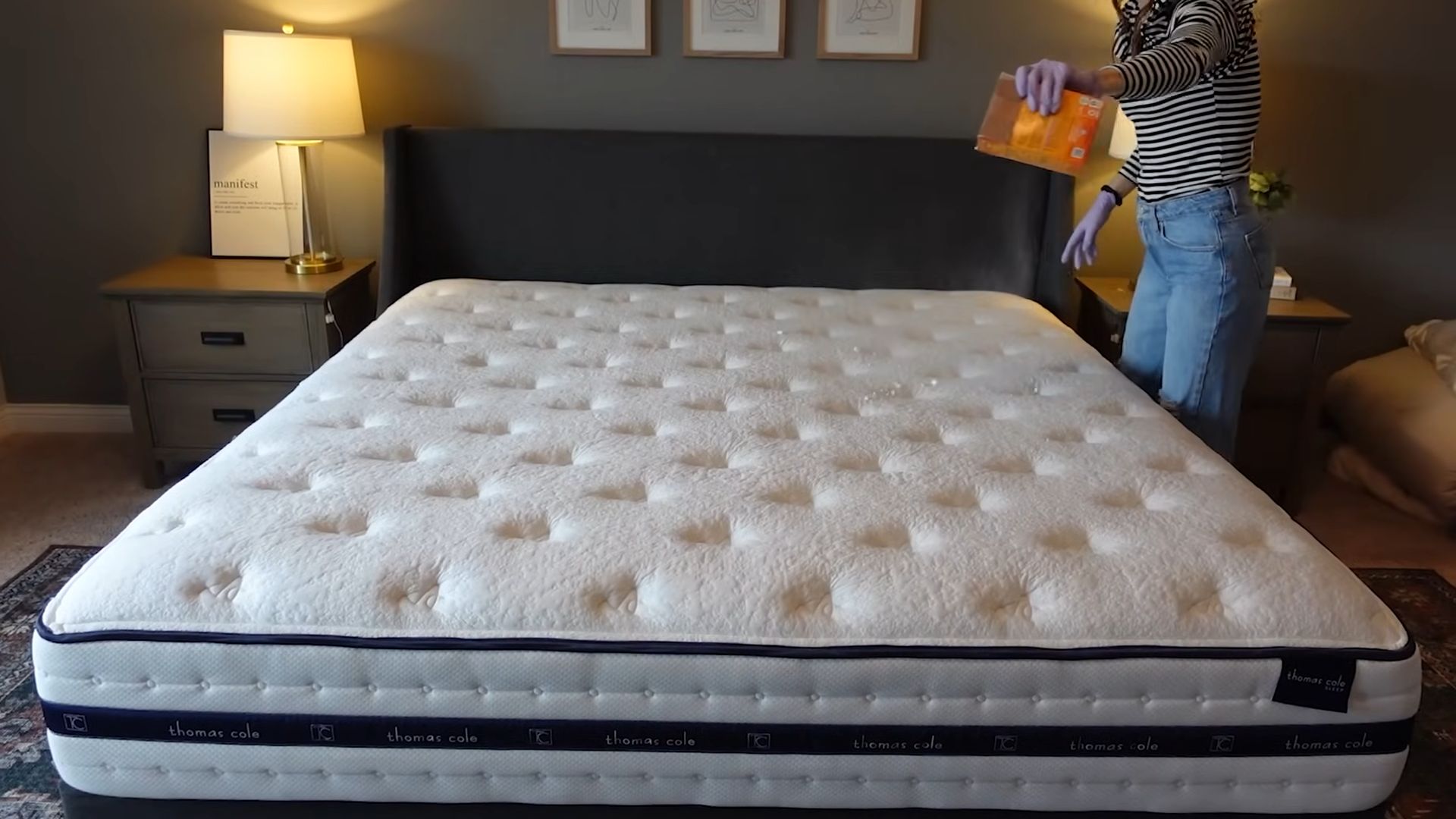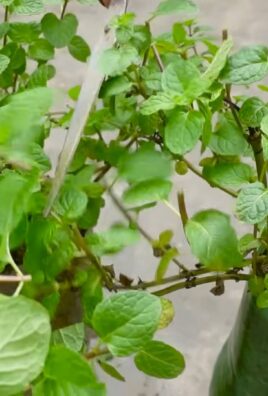Baking Soda Mattress Refresh: Is your mattress starting to smell a little…lived in? Don’t worry, you’re not alone! We all know that mattresses can harbor dust mites, dead skin cells, and lingering odors, making them less than inviting for a good night’s sleep. But before you resign yourself to tossing it out and buying a brand new one, let me tell you about a simple, cost-effective, and surprisingly effective DIY trick that will leave your mattress feeling fresh and revitalized.
The use of baking soda as a natural cleaner and deodorizer has been around for generations. Our grandmothers knew the power of this humble ingredient, using it for everything from cleaning ovens to freshening carpets. Now, we’re bringing that time-tested wisdom to your bedroom! This isn’t just about cleaning; it’s about creating a healthier and more comfortable sleep environment.
Why is a baking soda mattress refresh so important? Well, a clean mattress can significantly improve your sleep quality. By eliminating allergens and odors, you’ll breathe easier and sleep sounder. Plus, it’s a much more budget-friendly option than professional cleaning or replacement. In this article, I’ll guide you through a step-by-step process to easily refresh your mattress using baking soda and a few other common household items. Get ready to say goodbye to stale odors and hello to a cleaner, fresher, and more inviting bed!

DIY Baking Soda Mattress Refresh: Breathe New Life into Your Bed!
Okay, let’s face it, our mattresses take a beating. We spend a third of our lives on them, shedding skin cells, sweating, and sometimes even spilling things (guilty!). Over time, this can lead to unpleasant odors and a less-than-fresh sleeping experience. But don’t despair! You don’t need to shell out big bucks for a new mattress just yet. I’m going to show you a super simple and effective way to refresh your mattress using the magic of baking soda. It’s a natural, affordable, and surprisingly powerful way to deodorize and revitalize your bed.
What You’ll Need:
Before we dive in, let’s gather our supplies. This is a pretty low-key project, so you probably already have most of these things on hand:
* Baking Soda: This is the star of the show! A large box (at least 1 pound) should be enough for a queen or king-sized mattress.
* Vacuum Cleaner with Upholstery Attachment: A good vacuum is essential for removing the baking soda and all the gunk it loosens.
* Essential Oils (Optional): If you want to add a pleasant scent, grab your favorite essential oil. Lavender, eucalyptus, or tea tree oil are great choices for a relaxing and clean aroma.
* Sifter or Strainer (Optional): This helps distribute the baking soda evenly.
* Spray Bottle (Optional): If you’re using essential oils, you’ll need a spray bottle to mix them with water.
* Rubber Gloves (Optional): If you have sensitive skin, gloves can protect your hands from the baking soda.
* Clean Cloth or Sponge (Optional): For spot cleaning any stains.
Step-by-Step Instructions:
Alright, let’s get started! Follow these steps, and you’ll be sleeping on a fresher mattress in no time.
1. Strip the Bed:
First things first, remove all your bedding – sheets, blankets, pillows, everything! Toss your sheets in the wash. This is a great opportunity to give them a good cleaning while you’re at it.
2. Spot Clean Any Stains (If Necessary):
Take a good look at your mattress. Are there any visible stains? If so, now’s the time to tackle them.
* For Fresh Stains: Blot the stain immediately with a clean cloth or paper towel. Avoid rubbing, as this can spread the stain.
* For Older Stains: Mix a small amount of mild dish soap with water. Gently dab the stain with a clean cloth or sponge. Be careful not to oversaturate the mattress. Blot with a clean, dry cloth to remove any excess moisture. You can also use a commercial stain remover specifically designed for mattresses, following the product instructions carefully.
* Let the area dry completely before moving on to the next step. This is crucial to prevent mold growth.
3. Prepare the Baking Soda:
Now for the main event! If you’re using essential oils, this is where you’ll incorporate them.
* For Scented Baking Soda: In a bowl, add a few drops (5-10) of your chosen essential oil to the baking soda. Mix well with a spoon or your hands (wearing gloves if you prefer) until the oil is evenly distributed. You want the baking soda to have a subtle scent, not be overpowering.
* For Unscented Baking Soda: If you prefer a neutral scent, simply skip the essential oil step and use the baking soda as is.
4. Sprinkle the Baking Soda:
This is where the sifter or strainer comes in handy. It helps distribute the baking soda evenly across the entire surface of the mattress.
* Even Distribution is Key: Sprinkle a generous layer of baking soda over the entire mattress surface. Don’t be shy! You want a thin, even coating. Pay particular attention to areas where you tend to sweat or where stains are present.
* Using a Sifter/Strainer: If you’re using a sifter or strainer, simply pour the baking soda into it and gently shake it over the mattress.
* Without a Sifter/Strainer: If you don’t have a sifter or strainer, you can sprinkle the baking soda directly from the box. Just try to spread it as evenly as possible.
5. Let it Sit (The Waiting Game):
This is the most important part! The baking soda needs time to work its magic, absorbing odors and moisture.
* Minimum Time: Let the baking soda sit on the mattress for at least 30 minutes.
* Ideal Time: For best results, I recommend letting it sit for several hours, or even overnight. The longer it sits, the more effective it will be.
* Ventilation: Open windows and doors to ventilate the room while the baking soda is working. This will help to remove any lingering odors.
6. Vacuum Thoroughly:
Once the baking soda has had its time to work, it’s time to vacuum it up.
* Use the Upholstery Attachment: Attach the upholstery attachment to your vacuum cleaner. This will help to prevent damage to the mattress fabric.
* Slow and Steady: Vacuum the entire mattress surface slowly and thoroughly. Overlap each pass to ensure that you remove all the baking soda.
* Pay Attention to Crevices: Pay special attention to the seams and crevices of the mattress, as baking soda can easily get trapped in these areas.
* Empty the Vacuum Bag/Canister: Empty your vacuum bag or canister after vacuuming the mattress. You don’t want to reintroduce any of the dust and debris you just removed.
7. Flip the Mattress (Optional):
If your mattress is flippable, now’s a great time to flip it over and repeat the process on the other side. This will ensure that both sides of your mattress are fresh and clean.
8. Air it Out:
After vacuuming, let the mattress air out for a few hours before putting your bedding back on. This will help to remove any remaining baking soda dust and allow the mattress to fully dry.
9. Make the Bed and Enjoy!
Once the mattress is completely dry, make your bed with fresh, clean sheets and enjoy your newly refreshed sleeping space!
Extra Tips and Tricks:
* Sunlight is Your Friend: If possible, take your mattress outside on a sunny day to air it out. Sunlight is a natural disinfectant and can help to kill bacteria and remove odors. Just be sure to protect it from the elements and don’t leave it out for too long, as prolonged exposure to sunlight can damage the mattress fabric.
* Mattress Protector: Invest in a good quality mattress protector to help prevent future stains and odors. A mattress protector will also help to prolong the life of your mattress.
* Regular Cleaning: Make it a habit to refresh your mattress with baking soda every few months to keep it fresh and clean.
* Dealing with Pet Odors: If you have pets, you may need to use a stronger solution to remove pet odors. Consider using an enzymatic cleaner specifically designed for pet odors. Follow the product instructions carefully.
* For Deeper Cleaning: For a deeper clean, you can mix the baking soda with a small amount of hydrogen peroxide to form a paste. Apply the paste to the mattress, let it sit for a few hours, and then vacuum it up. Be careful not to oversaturate the mattress with hydrogen peroxide, as this can damage the fabric. Always test a small, inconspicuous area first to ensure that the hydrogen peroxide doesn’t discolor the mattress.
* Vacuum Regularly: Even if you’re not doing a full baking soda refresh, vacuuming your mattress regularly (at least once a month) can help to remove dust mites and other allergens.
Troubleshooting:
* Baking Soda Residue: If you find that you’re having trouble removing all the baking soda, try using a brush attachment on your vacuum cleaner. You can also try dampening a clean cloth and wiping the mattress surface to remove any remaining residue. Be sure to let the mattress dry completely after wiping it down.
* Lingering Odors: If you’re still noticing odors after refreshing your mattress, try repeating the process. You may need to use more baking soda or let it sit for a longer period of time. You can also try using a different essential oil or a combination of essential oils.
* Allergic Reactions: If you experience any allergic reactions after using baking soda or essential oils, discontinue use immediately and consult with a doctor.
I hope this guide helps you breathe new life into your mattress! It’s a simple and effective way to keep your bed fresh and clean, and it’s much cheaper than buying a new mattress. Happy refreshing!

Conclusion
So, there you have it! A simple, effective, and incredibly affordable way to breathe new life into your mattress. This DIY baking soda mattress refresh isn’t just about eliminating odors; it’s about creating a healthier, more inviting sleep environment. Think of it as a mini-spa day for your bed, a chance to banish lingering smells, absorb excess moisture, and even tackle dust mites lurking beneath the surface.
Why is this a must-try? Because we all deserve a clean and comfortable bed, and this method offers a natural alternative to harsh chemical cleaners. It’s gentle on your mattress, safe for your family (including pets!), and incredibly easy to incorporate into your regular cleaning routine. Plus, the satisfaction of knowing you’re using a non-toxic solution to improve your sleep quality is truly rewarding.
But the beauty of this DIY trick lies in its adaptability. Feel free to experiment with different essential oils to create a custom scent that promotes relaxation and sleep. Lavender, chamomile, and eucalyptus are all excellent choices. You could even add a few drops of tea tree oil for its antibacterial properties, especially if you’re dealing with allergies or sensitivities.
For an extra boost of cleaning power, consider adding a tablespoon of borax to the baking soda mixture. Borax is a natural mineral that can help to further eliminate odors and disinfect your mattress. However, always exercise caution when using borax and ensure that it is completely removed from the mattress before sleeping on it.
Don’t just take our word for it – give this baking soda mattress refresh a try! We’re confident that you’ll be amazed by the results. Imagine sinking into a bed that smells fresh, feels clean, and promotes a restful night’s sleep. It’s a small investment of time and effort that yields significant benefits for your overall well-being.
We encourage you to share your experience with us! Did you try a different essential oil blend? Did you notice a significant improvement in your sleep quality? Let us know in the comments below. Your feedback will help other readers discover the magic of this simple yet effective DIY mattress refresh. Together, let’s create a community of clean and comfortable sleepers! We are eager to hear how this baking soda mattress refresh has worked for you.
Frequently Asked Questions
1. How often should I refresh my mattress with baking soda?
The frequency depends on your individual needs and lifestyle. If you have pets, allergies, or tend to sweat a lot during the night, you might want to refresh your mattress every month. Otherwise, every 2-3 months should suffice. A good rule of thumb is to refresh your mattress whenever you change your bedding. This helps maintain a consistently clean and fresh sleep environment. Consider also the humidity levels in your home. Higher humidity may warrant more frequent refreshing.
2. Can I use this method on any type of mattress?
Yes, this method is generally safe for most mattress types, including memory foam, innerspring, latex, and hybrid mattresses. However, it’s always a good idea to check the manufacturer’s instructions for your specific mattress before using any cleaning products or methods. For example, some mattresses may have specific cleaning recommendations or warnings against using certain substances. If you’re unsure, test a small, inconspicuous area of the mattress first to ensure that the baking soda doesn’t cause any discoloration or damage.
3. What if I don’t have a vacuum cleaner?
While a vacuum cleaner is the most effective way to remove the baking soda, you can still try this method without one. Use a clean, dry cloth or brush to gently sweep the baking soda off the mattress surface. You may need to repeat this process several times to remove all of the baking soda. Keep in mind that this method may not be as thorough as vacuuming, so you might not achieve the same level of cleanliness. If possible, consider borrowing a vacuum cleaner from a friend or neighbor.
4. What kind of baking soda should I use?
Regular baking soda (sodium bicarbonate) is perfectly fine for this purpose. There’s no need to buy a special type of baking soda. Just make sure it’s fresh and hasn’t expired. Expired baking soda may not be as effective at absorbing odors. You can usually find baking soda in the baking aisle of your local grocery store.
5. How long should I leave the baking soda on the mattress?
Ideally, you should leave the baking soda on the mattress for at least 30 minutes, but longer is better. For heavily soiled or odorous mattresses, you can leave it on for several hours or even overnight. The longer the baking soda sits on the mattress, the more time it has to absorb odors and moisture. Just be sure to vacuum it up thoroughly afterwards.
6. Can I add other ingredients to the baking soda mixture?
Yes, you can customize the baking soda mixture to suit your preferences. As mentioned earlier, essential oils are a great addition for fragrance and aromatherapy benefits. You can also add a tablespoon of borax for extra cleaning power. However, be cautious when using borax and ensure that it is completely removed from the mattress before sleeping on it. Some people also add a small amount of cornstarch to the mixture to help absorb moisture.
7. What if I have a stain on my mattress?
This baking soda mattress refresh is primarily for deodorizing and freshening, not for removing stains. If you have a stain, you’ll need to treat it separately before refreshing the entire mattress. There are many stain removal methods available online, depending on the type of stain. For example, you can try using a mixture of hydrogen peroxide and baking soda for blood stains, or a solution of dish soap and water for grease stains. Always test any stain removal method on a small, inconspicuous area of the mattress first to ensure that it doesn’t cause any damage.
8. Is this method safe for people with allergies or asthma?
In most cases, yes, this method is safe for people with allergies or asthma. Baking soda is a natural and non-toxic substance that is unlikely to trigger allergic reactions or asthma symptoms. However, if you are particularly sensitive, it’s always a good idea to test a small area first. Also, be mindful of the essential oils you use, as some essential oils can trigger allergies or asthma in certain individuals. Choose essential oils that are known to be gentle and non-irritating, such as lavender or chamomile.
9. My mattress is really old and smelly. Will this method still work?
While this method can help to freshen up an old and smelly mattress, it may not completely eliminate all odors, especially if the mattress is heavily soiled or has been exposed to moisture for a long time. In such cases, you may need to repeat the process several times or consider using a stronger cleaning solution. If the mattress is severely damaged or infested with mold, it may be time to replace it.
10. How do I prevent my mattress from getting smelly in the first place?
There are several things you can do to prevent your mattress from getting smelly. First, use a mattress protector to shield it from spills, stains, and dust mites. Second, wash your bedding regularly in hot water to kill bacteria and dust mites. Third, air out your mattress regularly by opening the windows and letting it breathe. Fourth, avoid eating or drinking in bed to prevent spills. Finally, consider investing in a dehumidifier if you live in a humid climate to prevent moisture buildup in your mattress.




Leave a Comment